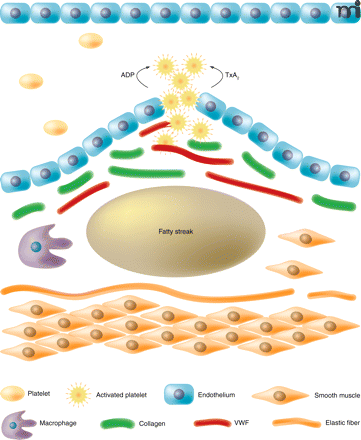New Therapeutic Approaches to Combat Arterial Thrombosis

Figure 1
Atherothrombosis: rupture of atherosclerotic plaque leading to platelet adhesion and formation of a thrombus
Invasion by macrophages and migration of smooth muscle cells leads to deposition of foam cells to form a fatty streak beneath the subendothelium. Rupture of this atherosclerotic plaque may ultimately occur and expose the proteins of the subendothelial matrix. Platelets adhere to von Willebrand factor (VWF) and collagen in the exposed subendothelium. The resulting platelet activation is amplified through paracrine signaling by ADP and thromboxane A2. Such signals are the target of most of the current anti-platelet drugs.



